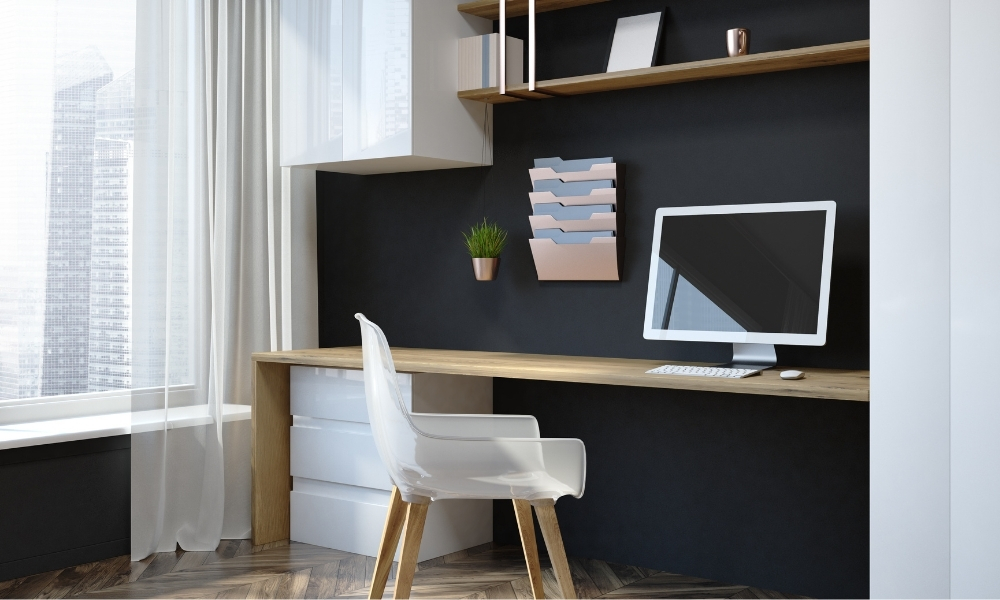Following the COVID19 crisis, home working has become the norm, but setting up an ideal working environment can be tricky. Not only does available space and wifi signal need to be taken into consideration, but also proximity to windows and natural light.
Paying attention to which room of your home you set up your working space in could be the difference between a happy and productive work environment and unsettling or distracting surroundings. We delved further into the topic and can reveal that your home office should ultimately be tailored to your working style and pattern.
Warm light, from firelight or shaded lamps, is often used to help promote relaxation. Whereas, cold light, such as natural daylight, can improve productivity and alertness, which is ideal for a home office. But how do you know which room in your home gets the best natural light? The answer lies in whether the room is north, south, west or east facing!
South-facing rooms
As the sun rises in the east and sets in the west, the south side of any home will see the most hours of sunlight during the day, especially if you live in the Northern Hemisphere. If you want as much natural light as possible in your home office, then a south-facing aspect may be a big consideration when choosing where to set up your desk.
South-facing rooms will provide warm light all day, although this is subject to change throughout the day and according to the time of year. Alongside home offices, south-facing rooms are recommended for kitchens, main living areas and other rooms you spend a lot of time in. Allow most winter sunlight.
If you’re doing long hours or on regular video calls, a south-facing might be best for you. And if you have been told you will be working from home for the foreseeable future, a south-facing room could present the most longevity in terms of regular natural light during the day.
North-facing rooms
North-facing views provide lighting that is consistent throughout the day. Natural light from northern exposure is not too harsh and not too dull, perhaps making it ideal for an at-home office.
Although north-facing rooms can sometimes be fairly shady, temperatures will be more consistent. With the heat of constant direct sunlight, a north-facing home office could provide more comfortable working conditions if you are sensitive to temperature and are often engaging in heating or air-con battles in the office!
Artists are known to choose north-facing studios because the light gives truer colour rendition whilst they work so those working in creative roles with multiple screens could be better suited to a north-facing workspace.
East-facing rooms
Eastern facing rooms will bring more light in the morning, ideal for early risers. Lighting in east-facing home offices’ will be bright first thing in the morning followed by long shadows and little to no sun later in the day.
To counteract the lack of direct sunlight in the afternoons, workers could use artificial lighting to control glare and maximise the available natural light.
If your working hours mean you start earlier or you work part-time only in the morning, an eastern facing home office is ideal for you, allowing enough natural light first thing to awaken the senses and creating a productive, positive workspace.
West-facing rooms
Rooms facing west bring more light during the afternoon. This sunlight comes the hottest part of the day, which can often cause glare.
In the late afternoon, west-facing working spaces will get long shadows and softer natural light. Because the sun is so low in the sky, west-facing windows can often get direct sunlight blazing through them. This makes them a bad choice for TV rooms since strong light makes screens harder to see, so this should be taken into consideration if your job involves a lot of screentime.
If you’re considering switching up your home office, we hope you found this blog useful. SGP is on hand to help with any upcoming home makeovers you might have in mind. If you’re looking for inspiration for how you can use glass in your home to maximise light, why not look over some of our previous projects?



